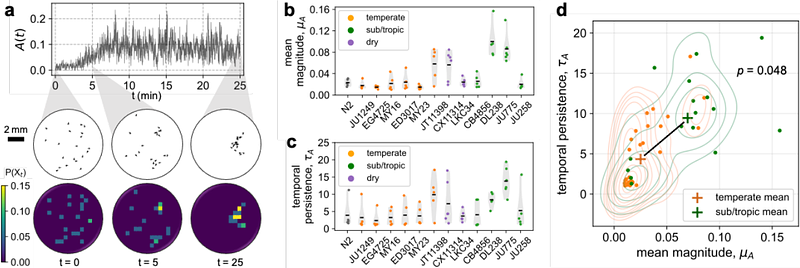Natural variation in Caenorhabditis elegans collective behavior reveals potential adaptation to novel environments

Natural variation in Caenorhabditis elegans collective behavior reveals potential adaptation to novel environments
Kang, Y. J.; Costa, A. C.; Ding, S. S.
AbstractRecent advances in quantitative approaches to behavior have enabled rigorous trait measurements that allow us to understand how behavior evolves in multiple taxa(1-7). However, placing these patterns of divergence into a natural evolutionary context remains challenging without a well-resolved evolutionary history. Recent genomic analysis of wild Caenorhabditis elegans strains shows that this species has rapidly spread from its ancestral environments in the Hawaiian Pacific regions out to the rest of the world in the past 100-200 years(8, 9). This recent history sets the stage for addressing how C. elegans behavior has adapted to novel environments in this colonization process. We focus on the evolution of collective behavior, which is ecologically relevant for this boom-and-bust species(10). We selected a panel of 13 genetically diverse wild strains of C. elegans sampled from around the globe, categorized them into environmentally-relevant climate groups, and conducted aggregation behavior experiments and analysis to capture subtle natural variation among these populations. We found that the strains from the more recently colonized temperate regions show decreased spatial magnitude and temporal persistence in their aggregation behavior compared to strains from the ancestral sub/tropical regions. Furthermore, the observed behavioral divergence between the two climate groups closely aligns with genetically predicted phenotypic evolution, potentially reflecting heritable behavioral adaptation to temperate environments as the species spread globally. Our results showcase behavioral adaptation in the recent C. elegans colonization history and introduce a new perspective on using C. elegans as a model system for studying behavioral evolution.